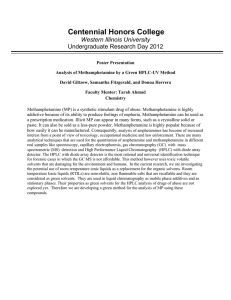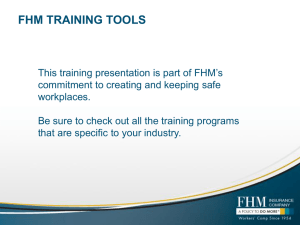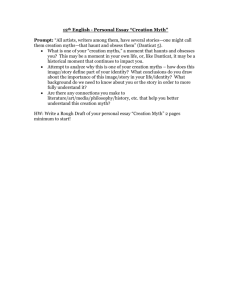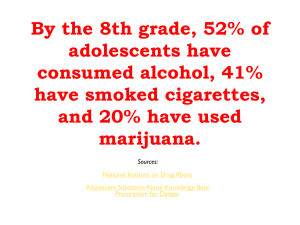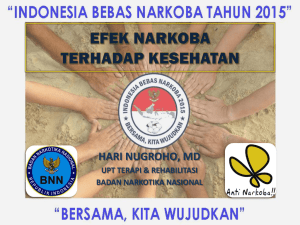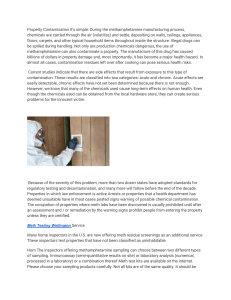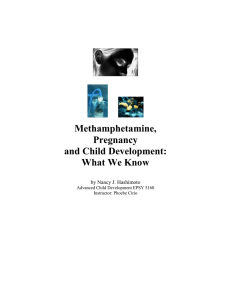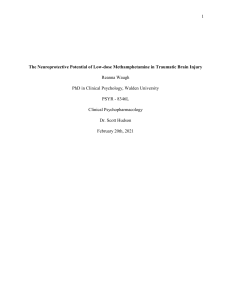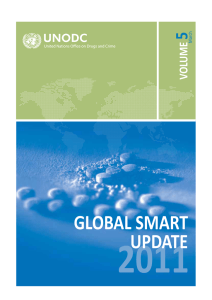Rural Crime & Justice Center A University Center of Excellence
advertisement
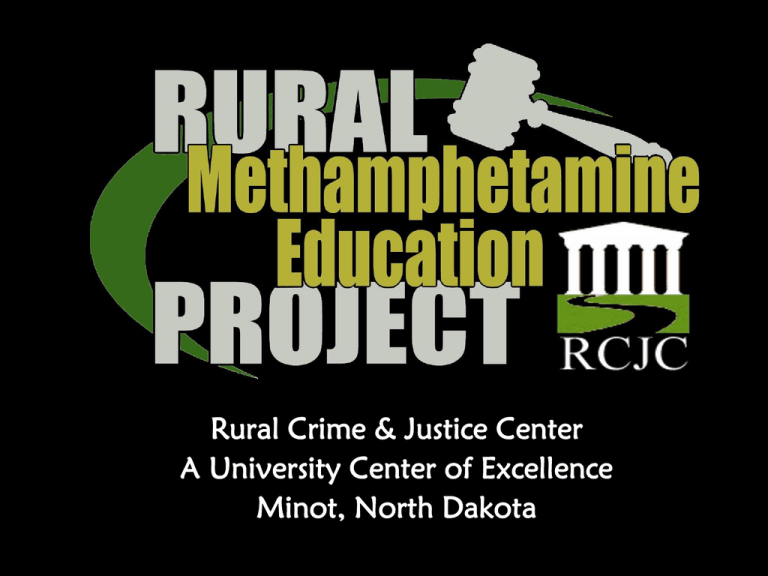
Rural Crime & Justice Center A University Center of Excellence Minot, North Dakota Treatment Myths Myth: Drug addiction is a voluntary behavior Fact: Voluntary use becomes compulsive use Fact: Continued use changes the brain Myth: Drug addiction is a character flaw Fact: Addiction is a brain disease Source: Target Meth Treatment Myths Myth: A person has to want treatment for it to be effective. Fact: People who enter treatment in which they face “high pressure” to confront their addiction do comparatively better, regardless of why they sought treatment. Source: Target Meth Treatment Myths Myth: Treatment doesn’t work. Fact: Treatment reduces drug use by 40 to 60 percent. Fact: Treatment improves many aspects of peoples lives other than problematic drug use. Source: Target Meth Treatment Studies show no significant differences in treatment outcomes measuring the following: • Retention in treatment rates • Urinalysis data during treatment • Rates of treatment program completion Source: NDDHS Commission on Alternatives to Incarceration, June 2006 Treatment Treatment outcomes are similar to that of other chronic diseases with behavioral components: Addicts who fully abstain from drugs/alcohol after 1 year: 40-60% Diabetics who fully adhere to medication regimen: <60% Hypertensives who fully adhere to medication regimen: <40% Asthmatics who fully adhere to medication regimen: <40% Diabetics, hypertensives & asthmatics who make behavioral changes to avoid repeat treatment within a year: <30% Source: Journal of American Medical Association, 2000 Treatment What does treatment do? • reduces drug and alcohol use • arrests the progression of the disease • improves health • protects the public safety • increases worker productivity • restores families, communities Source: NDDHS Commission on Alternatives to Incarceration, June 2006 Treatment • Prior to the rise of cocaine use in the 70’s and 80’s, treatment focused on alcohol, opiates and sedative abuse. • The epidemic of cocaine/crack focused attention on stimulant abuse. • Methamphetamine abuse in the 90’s brought new challenges to treatment. • Methamphetamine became popular in rural areas. Source: Methamphetamine Use: Treatment The longer and more sever the use, the more severe the psychiatric symptoms. Study of over 1,000 MA users in treatment found high levels of: • Depression • Damaged memory • Anxiety • Violent behavior • Suicide • Impaired motor coordination • Mood changes Symptoms easily triggered or worsened by new use or stressors. Source: Methamphetamine Use: Lessons Learned, February 2006 Treatment Common difficulties with stimulant users: • high rates of relapse • extended periods of depression • episodes of confusion & paranoia • protracted craving Source: Methamphetamine Use: Treatment What might we expect to see in treatment? • Impaired cognitive functions resulting in difficulties with the following: learning new information solving problems maintaining attention filter distracting or conflicting information quickly processing information Sources: American Journal of Psychiatry August 2005 / Biological Psychiatry, February 2005 Treatment Some abilities get worse in early abstinence: • Recall • Recognition Some deficits improve after a period of 12-weeks of abstinence: • The ability to ignore irrelevant information • The ability to manipulate information Source: NDDHS Commission on Alternatives to Incarceration, June 2006 Treatment Attention is fundamental to many cognitive functions. Consider impairment in treatment plan. • Journaling, even after group, to remind them of what they talked about. • Frequent reminders of tasks. • Consider abstaining from all stimulants, to include caffeine and tobacco. Sources: NIDA, Cardwell C. Nuckols, Florida Alcohol & Drug Abuse Association Treatment Research on treating methamphetamine addiction is ongoing. Progress has been made but the development, implementation and evaluation of specialized treatment programs takes time. Some promising approaches: • community reinforcement • contingency management intervention • relapse prevention • network therapy Source: Midwest HIDTA Any Questions?

